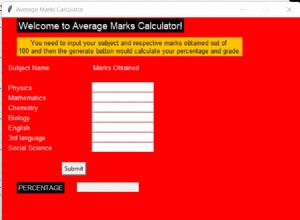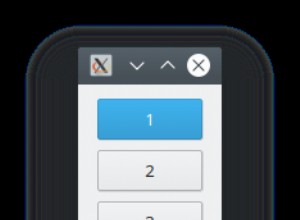Python 3 Tkinter Glisser et déposer une grande visionneuse d'images ou un affichage avec l'application de bureau Zoom Widget GUI
# coding:utf8
# author:blackpencil2019@github
import tkinter as tk
from PIL import Image, ImageTk
class GV:
IMGx = 720 # 3:2 非奇数, 图像窗口尺寸
IMGy = 480
IMGsx = 240 # 3:2 非奇数, 缩略图窗口尺寸
IMGsy = 160
PAD = 5
pic_1 = r'sample.jpg' # 需要显示的图片路径/名称--> IMAGE_1 & IMAGE_2
IMAGE_1 = 1 # 更新到canvas的图像
IMAGE_2 = 2 # 更新到canvas的缩略图
origin_x0, origin_y0, originx, originy = 0, 0, 3000, 2000 # 鼠标点击时坐标(窗口坐标),显示窗口的中心点在原图上的坐标
mapx, mapy = IMGsx / 2, IMGsy / 2 # 缩略图中心坐标
errx, erry = 0, 0 # 记录相对运动引起的累积误差
DRAG_GAIN = 2
class LargeImageViewer:
def __init__(self, frame):
self.sub1 = self.creatSubFrame(frame, GV.IMGx, GV.IMGy, 0, 0)
self.updateCanvas(self.sub1) # 便于更新图像,将其作为方法调用
def creatSubFrame(self, frame, w=50, h=50, Row=0, Column=0, Rs=1, Cs=1):
subframe = tk.Frame(frame, bg='white', height=h, width=w)
subframe.propagate(False)
subframe.grid(row=Row, column=Column, rowspan=Rs, columnspan=Cs)
return subframe
def updateCanvas(self, frame):
self.cv1 = tk.Canvas(frame)
self.cv1.configure(width=GV.IMGx, height=GV.IMGy)
self.cv1.configure(bg='AliceBlue')
self.cv1.grid(row=0, column=0, padx=GV.PAD, pady=GV.PAD)
self.cv1.bind("<ButtonPress-1>", self.scroll_start)
self.cv1.bind("<B1-Motion>", self.scroll_move)
self.cv2 = tk.Canvas(frame)
self.cv2.configure(width=GV.IMGsx, height=GV.IMGsy)
self.cv2.configure(bg='gray')
self.cv2.grid(row=0, column=0, padx=GV.PAD, pady=GV.PAD, sticky=tk.S + tk.E)
self.cv2.bind("<ButtonPress-1>", self.map_scroll_move)
self.cv2.bind("<B1-Motion>", self.map_scroll_move)
if isinstance(GV.pic_1, str):
img = Image.open(GV.pic_1)
else:
img = GV.pic_1
GV.IMAGE_1 = ImageTk.PhotoImage(img, Image.ANTIALIAS)
# print(type(GV.IMAGE_1))
self.w, self.h, self.n, GV.IMAGE_2 = self.imageResize(img, GV.IMGsx, GV.IMGsy)
width, height = int(self.w * self.n), int(self.h * self.n)
self.mapa, self.mapb = int(width * GV.IMGx / (2 * self.w)), int(height * GV.IMGy / (2 * self.h))
# print(GV.IMAGE_1)
self.img1 = self.cv1.create_image(GV.IMGx / 2, GV.IMGy / 2, anchor="center", image=GV.IMAGE_1,
state="disabled")
print(GV.pic_1)
self.img2 = self.cv2.create_image(GV.IMGsx / 2, GV.IMGsy / 2, anchor="center", image=GV.IMAGE_2,
state="disabled")
self.rect = self.cv2.create_rectangle((GV.IMGsx / 2 - self.mapa, GV.IMGsy / 2 - self.mapb,
GV.IMGsx / 2 + self.mapa, GV.IMGsy / 2 + self.mapb),
outline="yellow")
GV.origin_x0, GV.origin_y0, GV.originx, GV.originy = 0, 0, self.w / 2, self.h / 2
GV.errx, GV.erry, GV.mapx, GV.mapy = 0, 0, GV.IMGsx / 2, GV.IMGsy / 2
def imageResize(self, pil_image, winw, winh):
w, h = pil_image.size
# print(w,h)
n1 = 1.0 * winw / w
n2 = 1.0 * winh / h
n = min([n1, n2])
width = int(w * n)
height = int(h * n)
# print(width, height)
return w, h, n, ImageTk.PhotoImage(pil_image.resize((width, height), Image.ANTIALIAS))
def map_scroll_move(self, event):
map_dx, map_dy = GV.mapx - event.x, GV.mapy - event.y
GV.mapx, GV.mapy = event.x, event.y
self.cv2.move(self.rect, -map_dx, -map_dy)
k1 = 1 / self.n
# 消除累积误差
x, y = int(map_dx * k1), int(map_dy * k1)
x, GV.errx = int(x + GV.errx), x + GV.errx - int(x + GV.errx)
y, GV.erry = int(y + GV.erry), y + GV.erry - int(y + GV.erry)
GV.originx, GV.originy = GV.originx - map_dx * k1, GV.originy - map_dy * k1
self.cv1.move(self.img1, x, y)
# self.cv1.coords(self.img1, int(GV.originx), int(GV.originy))
def scroll_start(self, event):
self.cv1.scan_mark(event.x, event.y)
# print(event.x,event.y)
GV.origin_x0, GV.origin_y0 = event.x, event.y
def scroll_move(self, event):
self.cv1.scan_dragto(event.x, event.y, gain=GV.DRAG_GAIN)
# print(event.x,event.y)
origin_dx = (GV.origin_x0 - event.x) * GV.DRAG_GAIN
origin_dy = (GV.origin_y0 - event.y) * GV.DRAG_GAIN
GV.originx, GV.originy = GV.originx + origin_dx, GV.originy + origin_dy
GV.origin_x0, GV.origin_y0 = event.x, event.y
k2 = self.n
GV.mapx, GV.mapy = GV.mapx + origin_dx * k2, GV.mapy + origin_dy * k2
self.cv2.coords(self.rect, int(GV.mapx) - self.mapa, int(GV.mapy) - self.mapb, int(GV.mapx) + self.mapa,
int(GV.mapy) + self.mapb)
if __name__ == "__main__":
root = tk.Tk()
root.title("Large Image Viewer")
root.resizable(0, 0)
root.configure(background='white')
LIV = LargeImageViewer(root)
root.mainloop()


